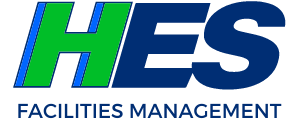The Benefits of a Facilities Resourcing Partnership
Educational institutions managing their custodial services internally can often overlook the hidden costs and inefficiencies. Partnering with a trusted facilities service provider offers significant, though sometimes hard-to-quantify, benefits. While improvements in quality and consistency can be tracked using Key Performance Indicators (KPIs), the overall savings and operational advantages extend far beyond the surface. Below are the key factors to consider when evaluating whether a partnership with a custodial resourcing provider is the right decision for your institution.
1. Employee Costs
Internal custodial staff are typically attracted by benefits programs, which can increase employer costs by over 25% per employee. For example, a custodian earning $15.00 per hour costs the employer $18.75 per hour when benefits are factored in. The Bureau of Labor Statistics (BLS) reports that benefits comprised about 29.6% of total employee compensation in service occupations in 2023. These costs include mandatory health insurance, retirement contributions, and other benefits, making self-operated custodial services more expensive than just base wages suggest.
2. Turnover and Recruitment Costs
Custodial staff experience incredibly high turnover, with rates near 100% annually, according to the International Sanitary Supply Association (ISSA). Constant recruitment, vetting, and onboarding of new employees significantly burden human resources departments. Additionally, custodial work is physically demanding, contributing to high worker compensation costs. The Occupational Safety and Health Administration (OSHA) estimates that janitors suffer approximately 5.7 injuries per 100 full-time employees, driving up school insurance premiums. This high turnover also disrupts the consistency of cleaning services, impacting overall facility cleanliness and employee morale. As a result, institutions are often forced to allocate more time and resources to training new staff, further straining operational budgets and efficiency.
3. Paid Time Off (PTO) and Benefit Management
While Paid Time Off (PTO) is a valuable benefit, managing it internally can be both complex and costly. A more practical solution might involve offering a set number of non-accruing personal days alongside paid holidays. This approach reduces the long-term financial liabilities associated with accrued PTO and simplifies administrative processes, allowing HR departments to manage time off more efficiently. Additionally, this method offers employees a clearer understanding of their available time off, promoting work-life balance without the burden of tracking accrued hours.
4. Equipment and Supply Management
In-house custodial teams often need help managing equipment, maintenance, and supplies. Many institutions purchase supplies annually and handle distribution themselves, but costs can quickly spiral without proper inventory control and equipment upkeep. Industry studies have shown that schools partnering with facilities service providers can reduce supply costs by up to 20%, thanks to centralized purchasing and better inventory management. A facilities partner can also include these costs in their annual contract, eliminating unexpected overruns.
5. Administrative Time Management
The time spent by school administrators managing custodial issues can be a significant drain on resources. In a district with 50 schools, if administrators spend just 30 minutes daily on custodial matters, this amounts to:
– 25 hours per day across all schools
– 4,500 hours per year (based on a 180-day school year)
– The equivalent of 13 school days per location annually
This time could be better spent on core responsibilities like teacher evaluations, student engagement, and academic support. According to a Wallace Foundation study, student achievement can increase by up to 10% when school leaders can focus more on instructional leadership.
6. Savings
Numerous examples exist of school districts saving significantly by partnering with facilities management providers. For instance, one district in North Carolina reported saving over 15% annually after partnering with a service provider. These savings allowed the district to reinvest in critical areas like technology upgrades, teacher salaries, and infrastructure improvements.
7. Quality and Consistency
While financial savings are a strong incentive, improved service quality, and consistent management oversight are also crucial. Industry data and customer feedback frequently highlight improvements in building cleanliness, inventory control, communication, and overall consistency after partnering with a qualified facilities service provider. Below are some testimonials that reflect the value of these partnerships:
- “You (HES) have remained steadfast to the work at hand: keeping our university operating, clean, and safe. We are extremely grateful.” – University Chancellor
- “HES is organized, thoughtful, and team-oriented. We are happy with this partnership and appreciate the more efficient, well-trained custodial staff.” – School CFO
- “Our campus has never looked better!” – University President
- “Your implementation made the impossible possible. Communication is constant, and customer service is top-notch.” – University VP of Finance and Operations
- “You have exceeded expectations during the transition. Communication is open and transparent.” – School Superintendent
- “We are truly grateful for your leadership and commitment to our community. You play a vital role in continuing our school’s legacy.” – University COO
- “HES has proven to be a true partner and team member in every aspect of our daily operation. Their team consistently goes above and beyond!” – School Facilities Director (20th largest U.S. District)
- “We are very pleased with the continued dedication HES has to make our schools safe, clean, and welcoming environments for students and staff. You consistently meet and exceed our expectations.” – School District Procurement Director
Conclusion
Partnering with a qualified facilities service provider such as HES Facilities Management allows educational institutions to enhance custodial services’ quality and consistency while reducing operational costs. This partnership frees up valuable administrative time and resources, enabling school leaders to focus on their core mission: delivering quality education. The financial savings can then be reallocated to essential areas such as hiring more teachers, upgrading technology, and addressing pressing maintenance needs, ultimately benefiting both students and staff.

